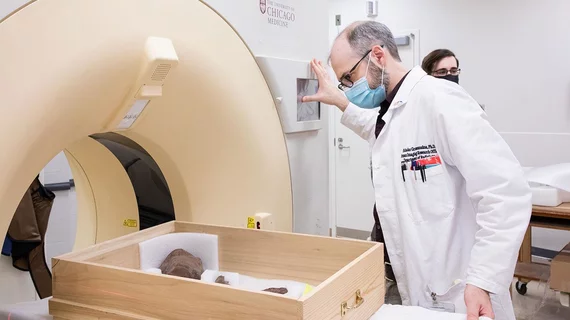Experts hope CT can help unlock age-old question: Why were T. Rex arms so short?
SUE the Tyrannosaurus rex, a worldwide celebrity dinosaur that resides at Field Museum in Chicago, recently underwent a radiological analysis at UChicago Medicine Center for Care and Discovery.
No, SUE was not sick (she did expire millions of years ago, after all) but rather, the reason for her most recent evaluation was to answer a decades old question—what was the purpose of a T. Rex’s disproportionately small arms?
Researchers are attempting to answer this question by analyzing CT scans of the prehistoric predator’s right arm. SUE, who is the largest and most complete T. Rex skeleton ever discovered thus far, has a particularly well-preserved right arm. Experts are hoping that by imaging the dinosaur’s shoulder girdle and forelimb that they can create a digital model that could help in determining a T. Rex arm’s range of motion and strength.
Having this new information could offer clues as to what the purpose of such short arms on such a massive animal was. Field Museum paleontologist Jingmai O’Connor recently joked with CBS Chicago that although their arms were clearly not suited for drumming or push-ups, the actual purpose of their arms has had scientists scratching their heads for decades.
“Jokes aside, the proportions of these forelimbs are very strange,” O’Connor said.
Nick Gruszauskas, Technical Director of the UChicago Medicine Human Imaging Research Office, happily completed the scans, describing this type of collaboration with the Field Museum as “fun.”
The CT scans were completed on December 8. SUE sported a temporary “prosthetic” arm while the bones were under analysis.
To learn more, click here.

